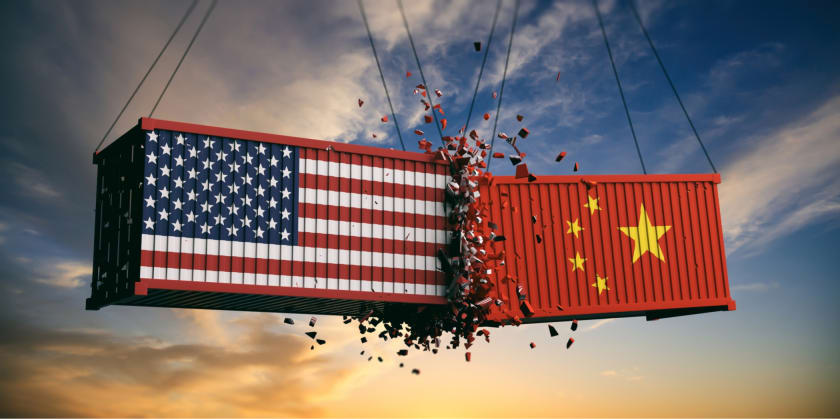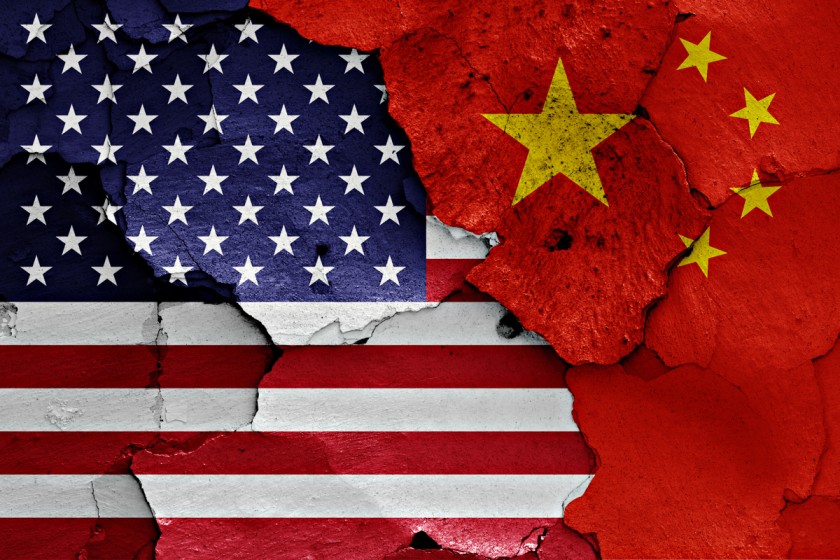5 Ways US Textile & Apparel Trade Shifting Out Of China?



Fashion trends give elegance which is the prepossessing beauty that never tarnishes. The pandemic has changed the proportion of textile imports, which dramatically declined last year. There is a tailback in the shipments linked to the United States ports, and trade is often delayed. Scaling the textile sector was strenuous but eventually gained customer acquisition. Later, the industry began to face significant issues and led to the cancellation of calls to the ports.
On the other hand, the US trade had a spectacular rise at the beginning of 2021, and the industry saw an immense increase in demand. The apparel imports continued to increase on an m-o-m basis on the 21st of August. The sales were prospering in the US despite the pace reducing because of the second hit of the pandemic, which led to the US China Trade War. The demand has been affected due to the gridlocks caused while shipping and growing costs.
Eventually, the economy of China had to face headwinds as several international brands were bet backed since they were facing severe labor shortages. The dawn of COVID-19 made transportation extremely difficult, and there was stagnant growth. The transitions aroused the US China Trade War leading to an apparent shift in the apparel industry.
China’s role in textile supply chain
China is gradually changing its origin but undoubtedly reais the world's biggest textile exporter. Though the market shares descended in the last two years, which led to the US China Trade War. However, the trend is almost persistent compared to the other partnering countries. The retailers and enterprises find benefits of trading in China because of the industrialization and advanced facilities.
China is a prominent apparel supplier for most countries in Asia; for instance, 50% of Bangladesh imports are from China. It plays a vital role in the world's trade.
The contrast between the United States and Chinese trade

China's textiles and apparel summarize that it possesses a consistent trend compared to the United States. Although there was a US China Trade War that influenced the market outreach and partnering countries, both the United States & China have reported exponential growth in the clothing and textile trade.
A brief critique of the clothing industry shows that China is a clear commander of textile brands, although the competition persists among the nations. The grandeur of the US market has dramatically increased over the last ten years but is gradually developing in the textile industry.
A straightforward interpretation shows that the United States relies more on the import of apparel and clothing from China than China's reliability on the exports of textiles from the United States. These variations probably led to the US China Trade War. These differences are more conspicuous in the trade market, which, when pursued for a longer time, would lead to implications for the efficacy of the United States entreaty on China to rectify the increasing bilateral trade on China's textiles and fashion market.
The US trade with China is designated in US dollars, but a small fraction of bilateral trade is carried out in Chinese currency because it is allowed to oscillate within the given range. The currency exchange rate between China and the United States is not persistent and led to the US China Trade War. Hence, the utility of the shipment alters from the time it leaves China to the time it transpires to the US as the rates keep changing. However, these altering rates can not be reviewed in the textile trade trends.
Did the textile industry move out of China?
China is considered the heart of the world's manufacturing and production needs. The trade between foreign industries and China is robust, and one cannot think of relocating the market out of China. The proficiency of the Chinese vendors, source & demand of apparel in China is high.
Although many enterprises are relocating the market from China which is advantageous in the long run, China has drastically increased the labor costs, restrictions, mounting abidance, and other political pressures.
Several brands have already shifted their factories from China to affordable and wide-paced destinations. The practical instance took place when America turned its business to business trade from China to India, Bangladesh, Mexico for a lower labor fetch which was one of the critical factors for the China Trade War.
Moreover, though the company has its main headquarters in China, most textile industries that rely on stitching/sewing, etc., have relocated their production in search of rock-bottom workers and market occupancy.
Trade relationship with China

China plays an influential role in the textile industry, but its functioning is gradually declining due to several reasons. The domestic needs of the economy are relative, and the country has been transporting comparatively less apparel in the last two years. Yet, China stands at the pinnacle of trade and manufacturing.
In the midst of 2017, the share market of China drastically fell in apparel trade from a vantage point of 38% in 2014 to 34.7% in 2017. Now, many reputed countries worldwide have recognized the trend and begun to reposition the market source from China. However, there was a significant divergence in the textile exports of China in the previous year leading to the US China Trade War. Similarly, there was a decline in home textile imports to China between January and August 2019.
Reasons for the shift of Trade in China
The primary reason for the divergence of relocation od apparels from China that led to the cause of US China Trade War is interpreted by the federal reserve, which elucidates the following grounds:
The US offers a heavy bottleneck on Chinese trade.
And the decline of raising export tax and its rebate rates in China in recent years had a huge influence on the repositioning of the market.
These causes led to the misreporting of the trade data from China, and the exports overpowered the values that drove to the intersection of the two cases. Initially, the US trade topped the export market because of the CIF difference, which gradually vanished. The import worth is much lower than China's export profit.
Partners share in US trade.
The textile industry has seen a drastic fall in imports from China. There was a 46% downside in the US trade. Apparels like sweaters, women's-girl suits, garments of fabrics, tights, dresses, T-shirts, ski suits, jackets, and swimwear were the top imports from China to the US. In the previous year, all the textiles had to face a downfall by an average of 48% in each category.
The misconception of US trade down turning its market from China is essentially not true. For example, the class which experienced the largest decline, like jackets & suits, has seen the same drop-off with other partners like Mexico, Vietnam, etc., who are the substantial importers to the US.
Though there was a US China Trade War, the challengers to China experienced a magnificent rise in imports. Bangladesh had a rise of 75% and an enormous increase in US imports, India & Vietnam had a growth of 20 & 21% respectively. On the other hand, Cambodia gained an average of 25% in each category of textile to the US imports.
Impact of US-China trade war
The US is the most powerful and influential country globally; nevertheless, China is equally dominant and plays a paramount role in the apparel industry. Many enterprises having their market share and business with the US could not purvey to appraise the factories in America. They felt it wouldn't be feasible and ascendable; moreover, it could cause financial eruptions.
The US China Trade War would force other textile industries to diversify their US network, which will eventually downturn the Chinese economy. Instead, the constraints could accelerate China's plan of action to redirect the attention of other countries and automated industries by shifting their operations and creating market space.
However, the business enterprises who reposition their brand to accommodate low-cost labor providing countries like India, Bangladesh, etc., will audit if the infrastructure available in those countries could match their brand requirements.
The logistics, well-developed infrastructure, and advanced technology available in China, which can serve as a potential market, attract many business folks to return and invest. China has a skilled workforce and a wide perspective that can undoubtedly withstand future market risks.
The export-aligned manufacturers are mainly placed in the primary textile fabrication hubs and well-known major provinces. Nevertheless, the fashion industry embraces a new prototype irrespective of the US China Trade War, and sourcing is distributed among China, Mexico, and other Asian countries.
Conclusion
Irrespective of the misreports or misconception, the outcome of the US China Trade War is undetermined. The two cases of US importing to China or China exporting to the US have an immense effect on the textile and apparel industry. Other countries of Asia have manifested the rise in the demand for trade from the US. The process is expected to recommence in the mere future. Countries like Bangladesh, India, Cambodia, and Vietnam are envisaged to experience more demand from the US after the Covid tragedy. Though the US China Trade War impacted trade transitions, the uncertainties of transport are likely to exist.
For a one-stop fashion solution to all your fashion-related problems, visit Fashinza today!



















